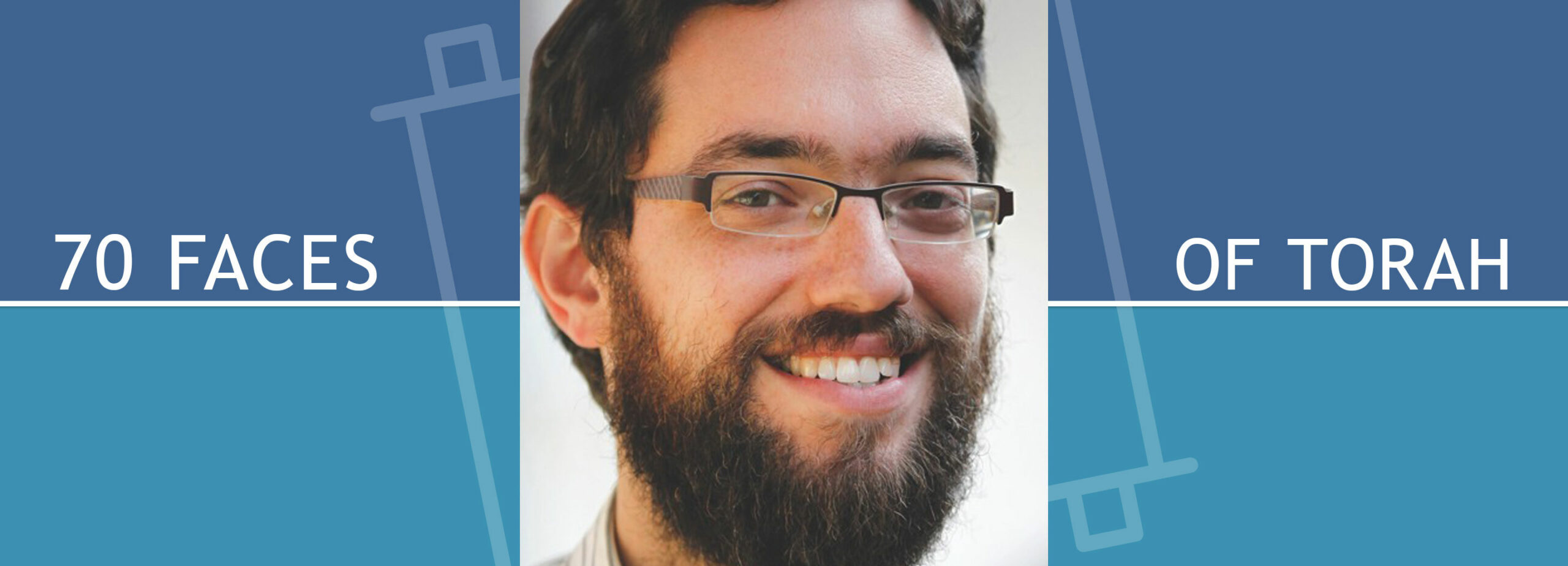Exodus By Bread Alone

Terumah (Exodus 25:1–27:19)
When my spouse and I got married, we received many useful gifts: dishes and a food processor and an extremely well-designed picnic backpack. We also received, from a relative who is hopefully not reading this, a lovely, but very heavy and exceedingly impractical sculpture of a bowl of fruit. Not a porcelain bowl filled with actual fruit, mind you, but porcelain fruit permanently affixed to a bowl made out of the same stuff.
I find myself thinking of that bowl of inedible apples and oranges this week, as we read the instructions for building the Tabernacle, the mishkan, in chapters 25–27 of the book of Exodus. This week’s Torah reading is full of beautiful and luxurious materials: “Gold, silver, and bronze; blue, purple, and crimson yarns and fine linen, goats’ hair, tanned rams’ skins, fine leather, acacia wood . . . onyx stones and gems . . . . ” (Exodus 25:3–7). In the middle of the wilderness, the Israelites are to build a gorgeous work of conspicuous consumption, a display of wealth and artisanship, all to the glory of God. The mishkan is designed to be portable—the large pieces all of loops and beams by which the people can transport them—but the materials that compose it make clear that we should not confuse its mobility for transience. The mishkan may move from place to place, but it is a forever item, built out of expensive materials of high quality, meant to last for the long haul.
Only one ingredient in this recipe of religious architecture stands out against this background. In Exodus 25:30, the Torah tells us that we are to “place on the table lehem panim, before me always.” The phrase lehem panim is difficult; the first word unambiguously means “bread,” but the word panim, which is related to meanings such as “face,” “turn,” and “interior,” is difficult to make sense of in context. You can readily understand how the various valences of the Hebrew word led to the common English translation “showbread” (or in the older English spelling, which remains common in Bible translations, “shewbread”). But no rendering of the Hebrew conveys the ambiguity encoded by the original phrase.
What is clear is that, in the midst of the biblical blueprints describing how various woods, metals, and fabrics are to be deployed in the construction of this sacred space, bread—natural, edible, perishable bread—appears as an essential design element. Unlike the structures made of wood and gold and linen, the bread will need to be replaced weekly. Ironically, a porcelain bowl of fruit might have been more practical in this setting, but the Torah demands regular old bread.
The incongruity of bread, with all its potential for mold and decay, as a component of the mishkan alongside gold and wood, calls to mind a story about Alexander the Great, which appears in several places in Rabbinic literature (for example, Yerushalmi Bava Metzia 8:4). Alexander has traveled to a faraway land to learn about how other cultures operate; in the course of his conversation with the king of this country, Alexander reveals his love for money and gold. Later, the people of this exoticized locale bring out a feast, but in an inversion of the Tabernacle’s real bread for show, they serve their guest fruits and meat made of gold! When Alexander complains that he cannot eat this “food,” the king is surprised: “If you do not eat gold, why do you love it so much?” Basic food may not have the cultural cache of diamonds and platinum, but at the end of the day, it’s the only material good that truly matters.
And so it makes sense that even amidst the religiously motivated decadence of the mishkan, even as the Torah describes jewels and artisanship that would rival any secular palace, the Torah reminds us that we are sustained not by the signs of our wealth, nor of our devotion, but by the very material basics of human life. Indeed, the medieval commentator Ibn Ezra points out that the slippery word panim shares a root with the phrase that follows—God says that the lehem panim will “be before me [lifanai, related to the word panim] always.” Of all the components of the mishkan, only the shewbread receives that descriptor of perpetual presence. Precisely that which is most fragile, least impressive, and most fleeting becomes the symbol for the permanence of our relationship with God. Human beings might not live by bread alone; but we also can’t live without it. And it’s precisely that vulnerability, our dependence on something so basic as flour and water, that stands perpetually before God.
In the midst of the mishkan stands bread. Not the golden bread served to Alexander the Great, but the kind made from wheat, the kind that rots, and which gives nourishment to human bodies. The Torah does not denigrate material wealth, or artisanry; the Torah recognizes the role of beauty and art and even extravagance as a piece of the religious life. But at the center of all the filigree and luxury is always plain old bread.
Rabbi Micha’el Rosenberg is an Associate Professor of Rabbinics at Hebrew College in Newton Centre, MA.

